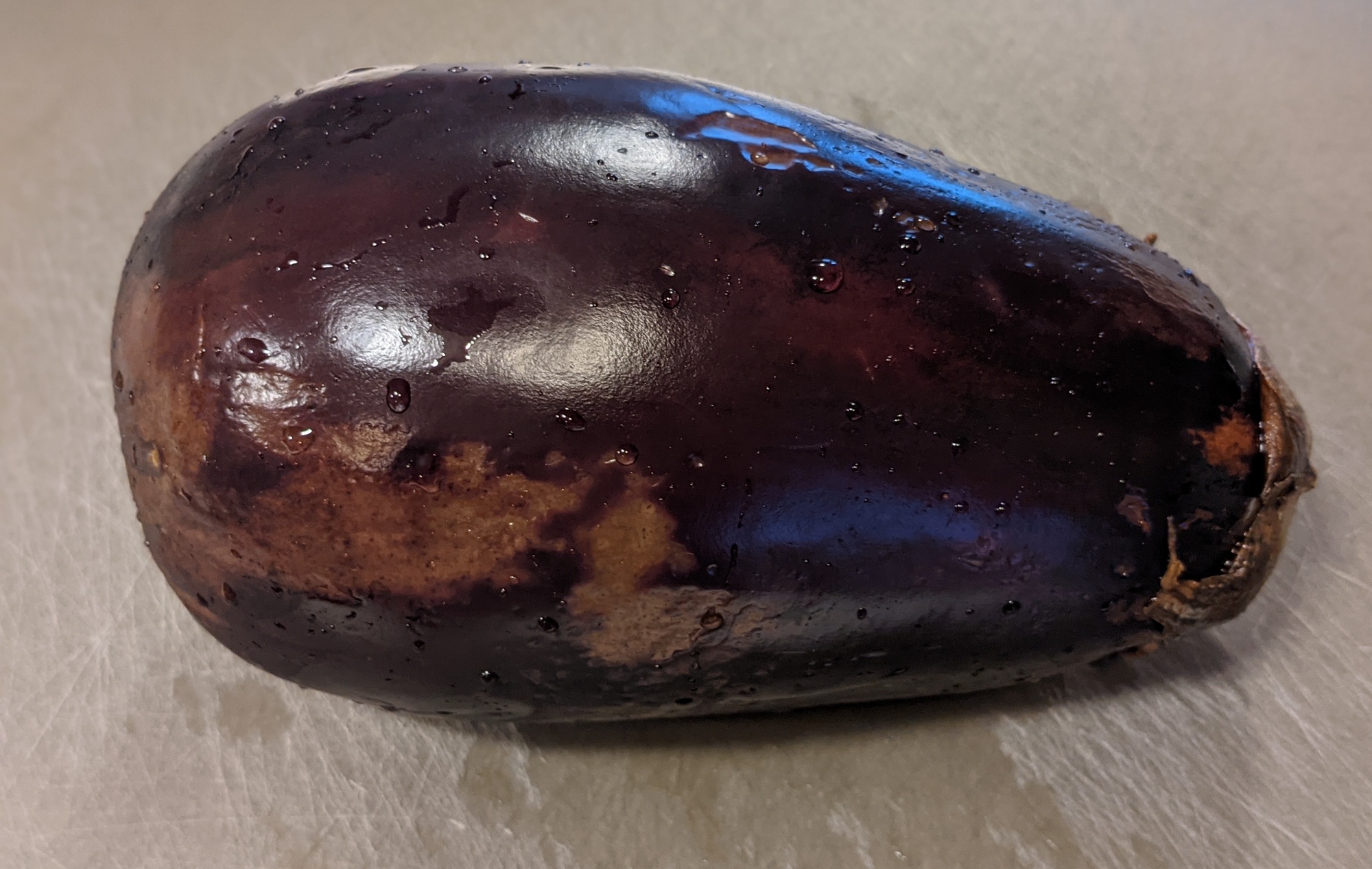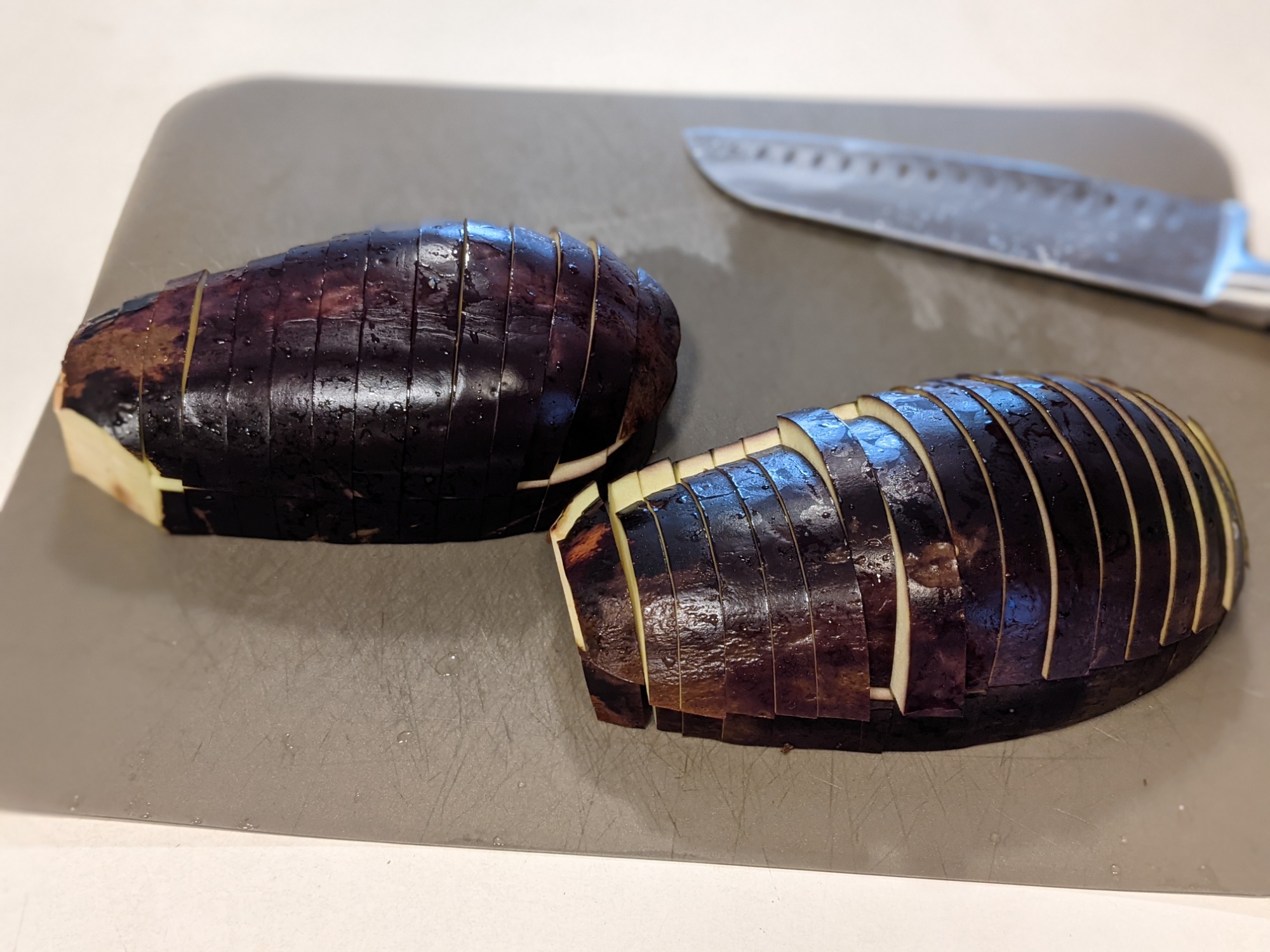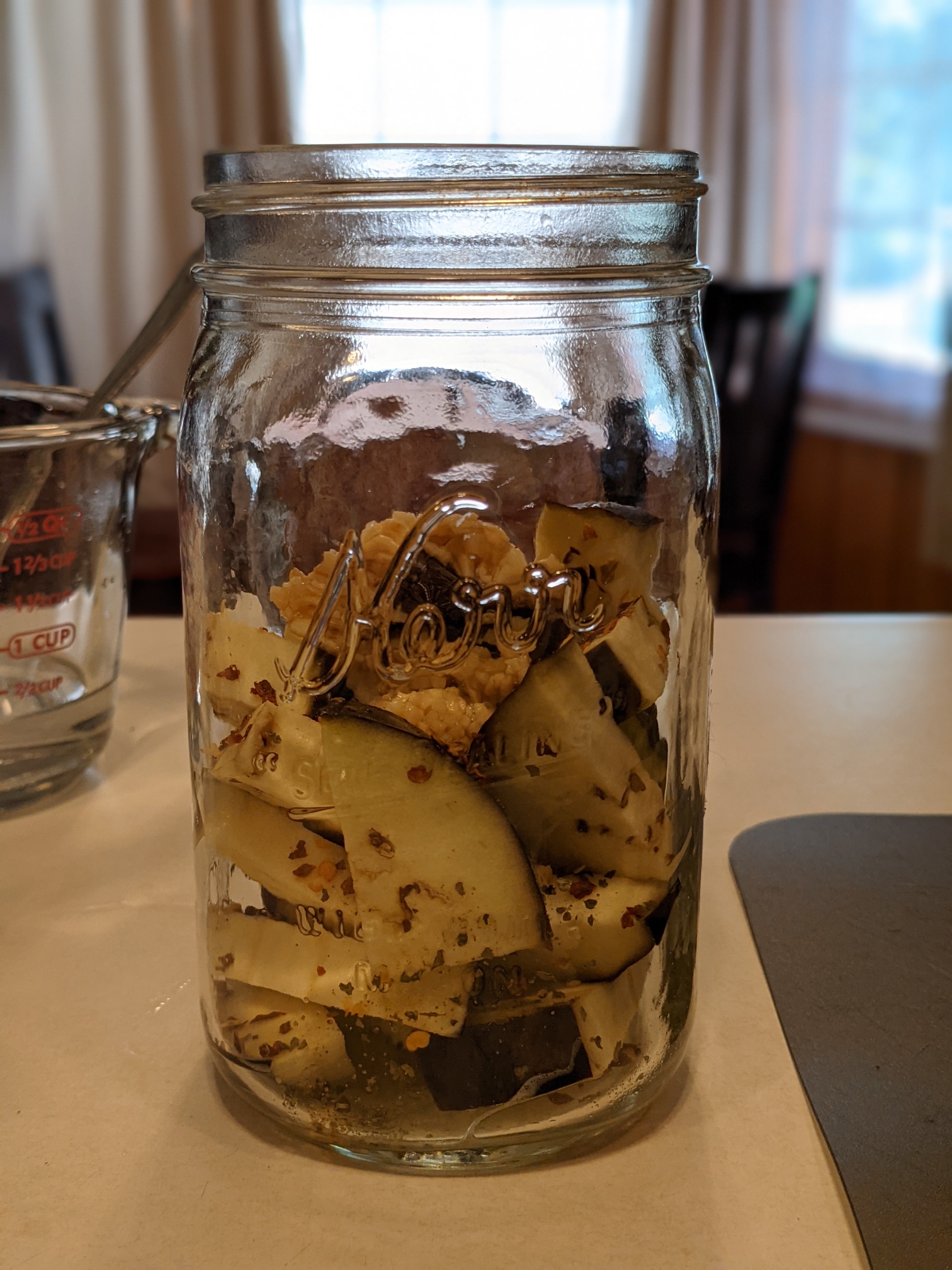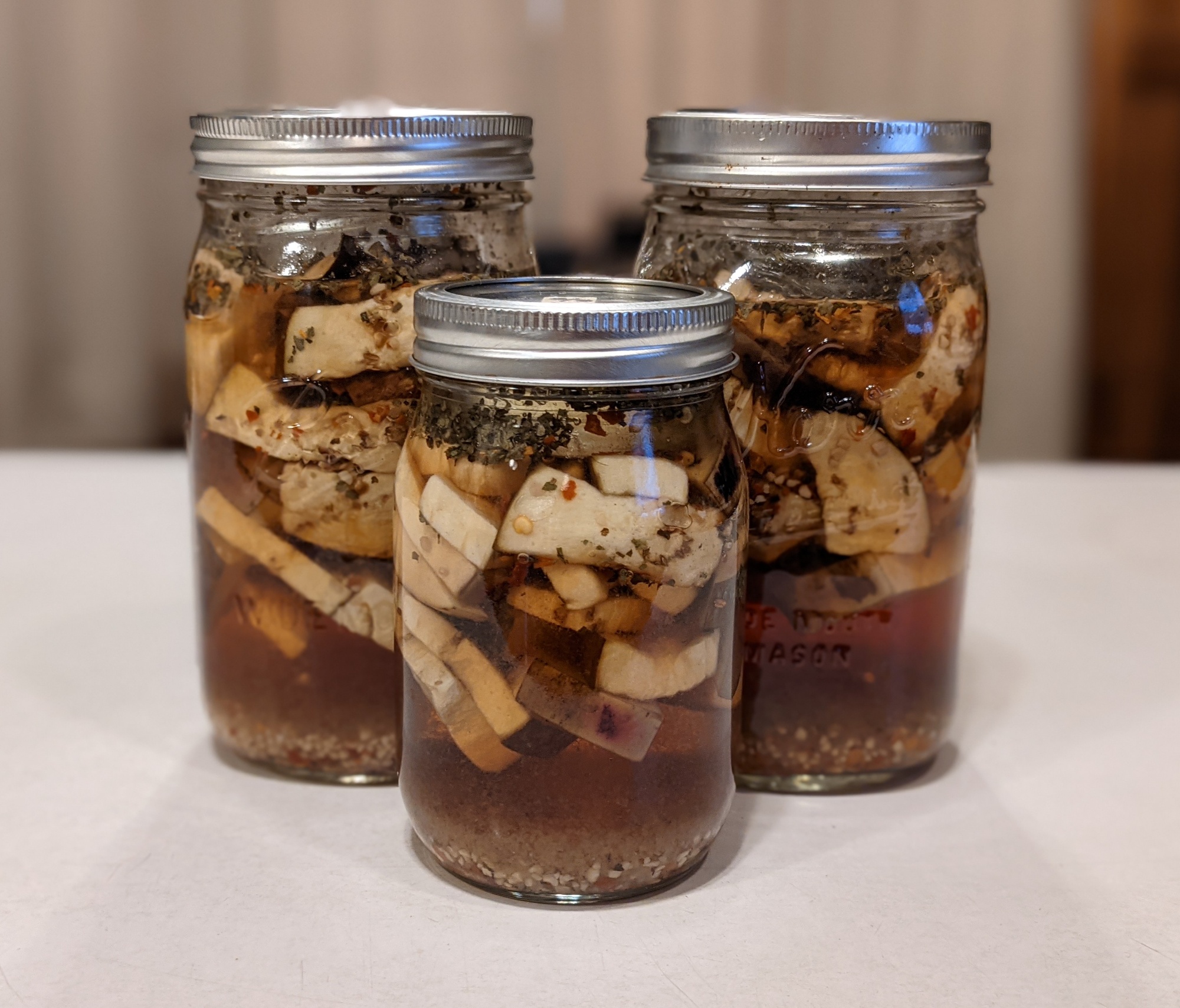
A once-vibrant eggplant sat in the crisper. It was sad to be alone, its companion having already been transformed into delicious keto eggplant rings. What do I do with just one eggplant, and one rapidly succumbing to refrigerator-assisted aging? Preserve it by fermenting it, of course.
Ok, so the eggplant isn’t picture-perfect: produce in stores has been pretty disappointing lately, and the eggplants looked like they had been used for footballs. The eggplant in the fridge wasn’t helped by the fact that it was forgotten for about a week; by the time I remembered and pulled it out, some of its rich color had begun to fade, and slightly soft spots had appeared. We were running out of time.

Lacto-fermented eggplant is very easy to make, requiring just eggplant, water, salt, garlic, red peppers, and oregano. I began by slicing the eggplant, with the aim of ending up with pieces of uniform thickness.

As I stuffed the eggplant pieces into the jars, I layered the them with garlic, peppers, and oregano.

I didn’t have fresh oregano, so I substituted powdered (I’ve used this sub in the past successfully). I stopped when there was about 1″ of headspace left.
⚠️As a chronic overfiller, I frequently end up with overflow as the jars build up pressure from the fermentation, creating a mess under the jars. Don’t do this – stop filling with plenty of room left for fermentation-related expansion. Also, the eggplant is initially very buoyant, so a fermentation weight like a Pickle Pebble will help keep the eggplant below the liquid, which is important for proper fermentation and preventing unwanted microbial growth.
The brine is made by dissolving 2 teaspoons of sea salt in 2 cups of filtered water. As a rule, I make extra – it always seems like there isn’t quite enough to fill all the jars to the optimal level, and all of the eggplant needs to be under liquid. If any brine is left over, I refrigerate it and use it when there’s been overflow and resulting loss of liquid in jars. I burp the jars daily to release some the the pressure, and the rising bubbles provide reassurance that the good microbes are working their fermentation magic.
It’s only been a couple of days now – the fermentation is active and the color of the brine has darkened noticeably. I’ll let the fermentation go for about a week, and then it should be ready for refrigeration until we’re ready to eat it.

Wondering what the finished fermented eggplant looks and tastes like? It’s thick and chewy, and reminds me a little of pickled herring, texturally. Since eggplant is like a sponge, it absorbs the flavors of the garlic and oregano, and picks up a delightful spicy “kick” from the peppers. It makes a great appetizer or just a tasty, probiotic treat for when you’re feeling peckish but not sure what will tickle your fancy. Be adventurous – try fermenting eggplant!
Want to try making this yourself? I based mine on this recipe from Cultures for Health, halving the quantities of ingredients and skipping the process of salting the eggplant (I don’t find it necessary).
